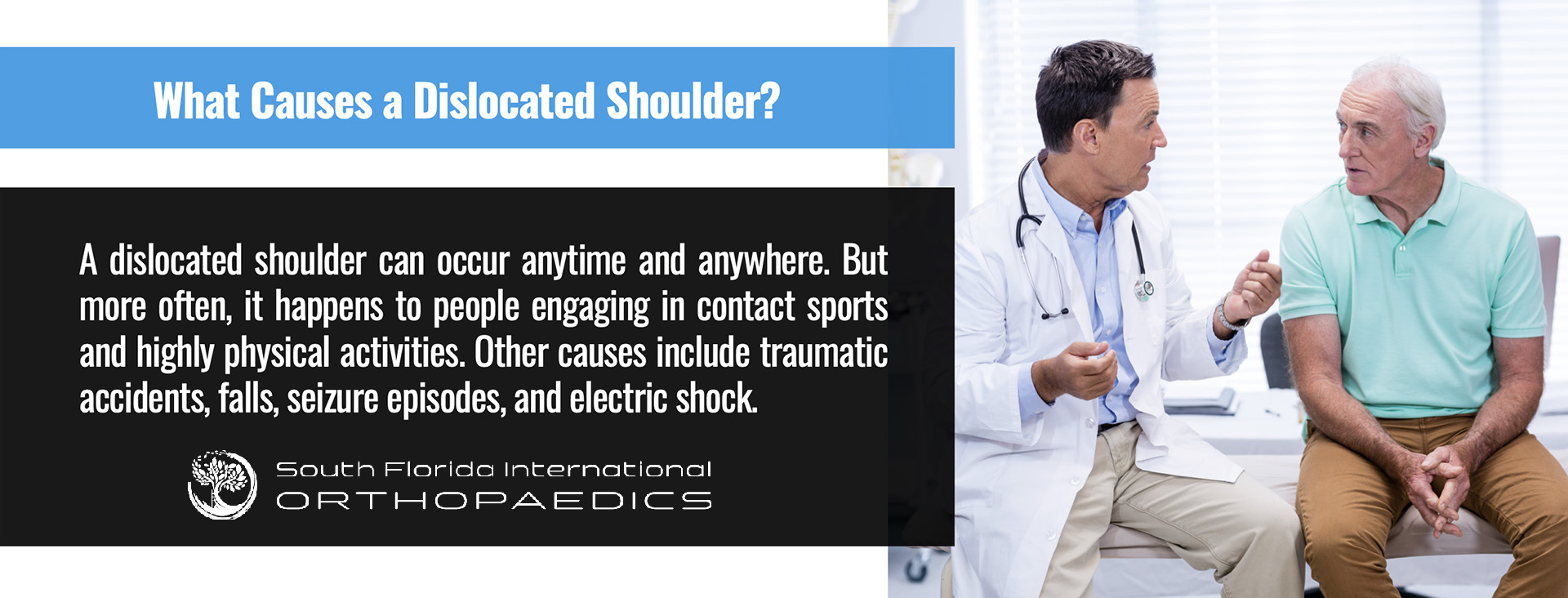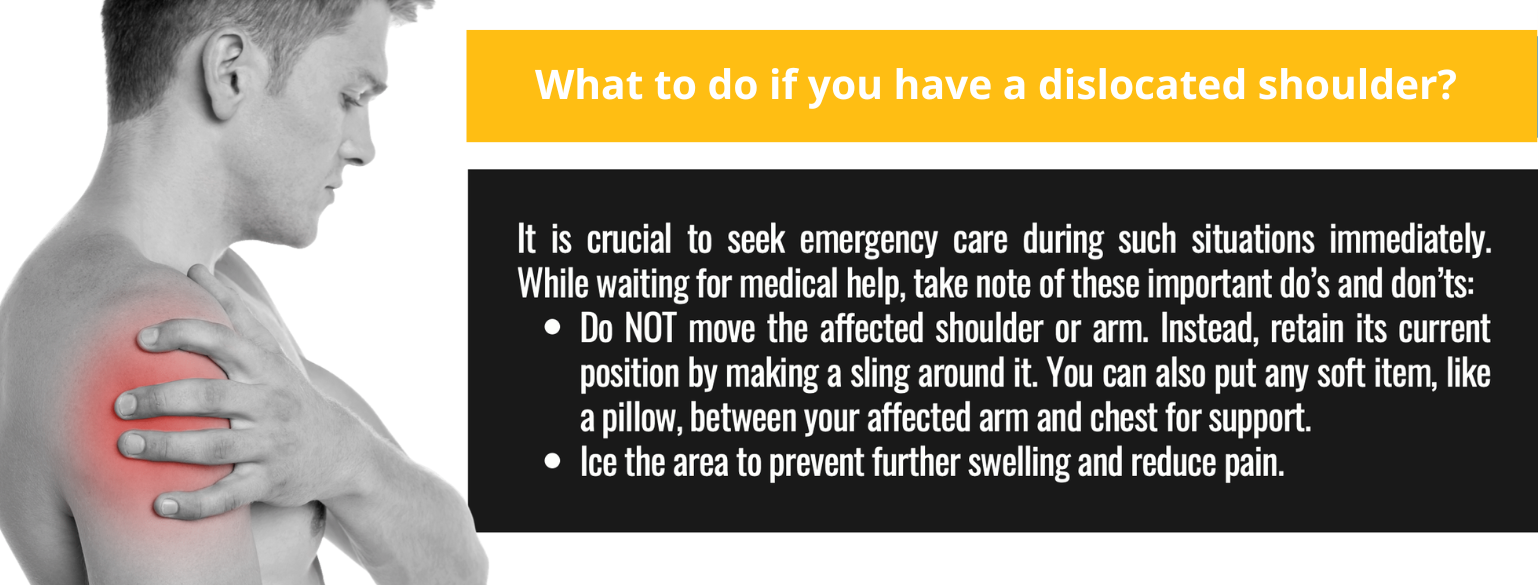Your shoulders give your arms the range of motion they need to carryout everyday activities. You can turn and rotate your arm in many directions, all thanks to the shoulder’s ball and socket joint made up of the humerus, clavicle, and scapula.
But there’s a catch: being the most flexible body part means that it is also prone to many types of disabling injuries. In fact, shoulder pain and other problems have a lifetime prevalence of 70%, with an incidence rate of 14.7 per 1000 patients per year.
Furthermore, out of all bodily injuries, those in the shoulders are the most common, especially in gymnasts (7.5%), baseball players (17.7%), and other athletes. One common injury, in particular, is shoulder dislocations. Learn more about this specific injury and its treatment options below.

What Is Shoulder Dislocation?
Your shoulder joints consist of three bones that work together to allow flexibility in your shoulder area. These bones are as follows:
- The clavicle or the collarbone
- The humerus or the upper arm bone, specifically its ball-like top part.
- The scapula or the shoulder blade.
Normally, the rounded top of the humerus lies inside the shallow socket of the shoulder blades called the glenoid cavity. This set-up allows movement and flexibility to your arms.
But with a dislocated shoulder, the top part of the upper arm’s bone pops out of the rounded socket, causing extreme pain.
This injury can be a partial dislocation (subluxation) wherein the humerus’ head only gets partially out of the socket. Or a complete dislocation meaning that the head is completely out of the glenoid cavity.
Moreover, shoulder dislocations can be classified into three types based on the injury’s clinical presentation. It can be:
Anterior Dislocation
According to studies, 97% of dislocated shoulders are anterior dislocations. It occurs when the humerus head gets trapped outside and against the front part of the glenoid cavity.
Such injuries can happen when you suffer a traumatic blow or extreme force while the shoulders are in a vulnerable position (e.g., arms raised and bent at the elbow).
Posterior Dislocation
In a minority of cases, a shoulder may get dislocated posteriorly, wherein the humerus’ head moves back towards the scapula (shoulder blade). But this type of injury only happens in 2% to 4% of reported shoulder injuries.
Inferior Dislocation (Luxatio erecta)
This is the rarest type of shoulder dislocation as it only accounts for less than 1% of the cases. On an x-ray image, you will see the head of the humerus located directly below the glenoid cavity (socket).
Patients suffering from this injury usually have their arms held, raised, or placed on the top of the head. Moving it down can cause intense pain due to the nature of the injury.
What Are Its Symptoms?
You will instantly know or suspect that you have a dislocated shoulder because it causes severe pain right then and there. Other immediate symptoms include:
- A visibly deformed shoulder (forward, backward, or downward)
- Limited movement
- Bruising and swelling in the affected area
- Weakness and numbness in the neck, arms, hands, and fingers.
- Muscle spasms can increase the level of pain.
During a radiographic exam, your doctor may also see bone fractures and damages in affected muscles, blood vessels, and nerves.
What Causes a Dislocated Shoulder?
A dislocated shoulder can occur anytime and anywhere. But more often, it happens to people engaging in contact sports and highly physical activities. Other causes include traumatic accidents, falls, seizure episodes, and electric shock.
What To Do If You Have a Dislocated Shoulder?
It is crucial to seek emergency care during such situations immediately. While waiting for medical help, take note of these important do’s and don’ts:
- Do NOT move the affected shoulder or arm. Instead, retain its current position by making a sling around it. You can also put any soft item, like a pillow, between your affected arm and chest for support.
- Ice the area to prevent further swelling and reduce pain.
How to Treat Shoulder Dislocation?
Your orthopedic specialist will order an x-ray exam to diagnose the injury. This will also allow them to see the type of dislocation, whether partial or complete and anterior or posterior.
Additionally, a radiographic image will confirm any presence of bone fractures, which can sometimes require surgical procedures. Physicians usually treat shoulder dislocations depending on the severity and extent of the damage.
- Closed reduction – this refers to the physical manipulation of the affected shoulders. Doctors do this by putting the humerus head manually back into its socket, resulting in immediate relief from pain.
- Open reduction – this is a surgical procedure performed by orthopedic surgeons. It is only used for dislocations with severely damaged tendons, ligaments, and bones.
- Shoulder arthroscopy – this minimally invasive procedure only uses tiny incisions to repair torn tendons and ligaments.
Where to Find the Best Shoulder Specialist in Miami?
If you have a dislocated shoulder or sustained any shoulder injury, then you definitely need the help of the best South Florida orthopedics center.
At South Florida International Orthopaedics, we provide high-quality orthopedic care and sports medicine in the Miami area. Our goal is to give patients the proper treatment and care they need through our comprehensive surgical and non-surgical services.
Besides shoulder dislocations, we also specialize in treating different types of shoulder-related conditions, such as:
- Rotator cuff tears
- Labrum tears
- Fractures
- Frozen shoulder (adhesive capsulitis)
- Shoulder arthritis
- Biceps and rotator cuff tendinitis
Get in touch with our expert specialists by giving us a call at (305) 233-0011 or scheduling an appointment. You can also visit www.sfiortho.com to learn more about our full-service orthopedic center.
The material contained on this site is for informational purposes only and DOES NOT CONSTITUTE THE PROVIDING OF MEDICAL ADVICE, and is not intended to be a substitute for independent professional medical judgment, advice, diagnosis, or treatment. Always seek the advice of your physician or other qualified healthcare providers with any questions or concerns you may have regarding your health.

